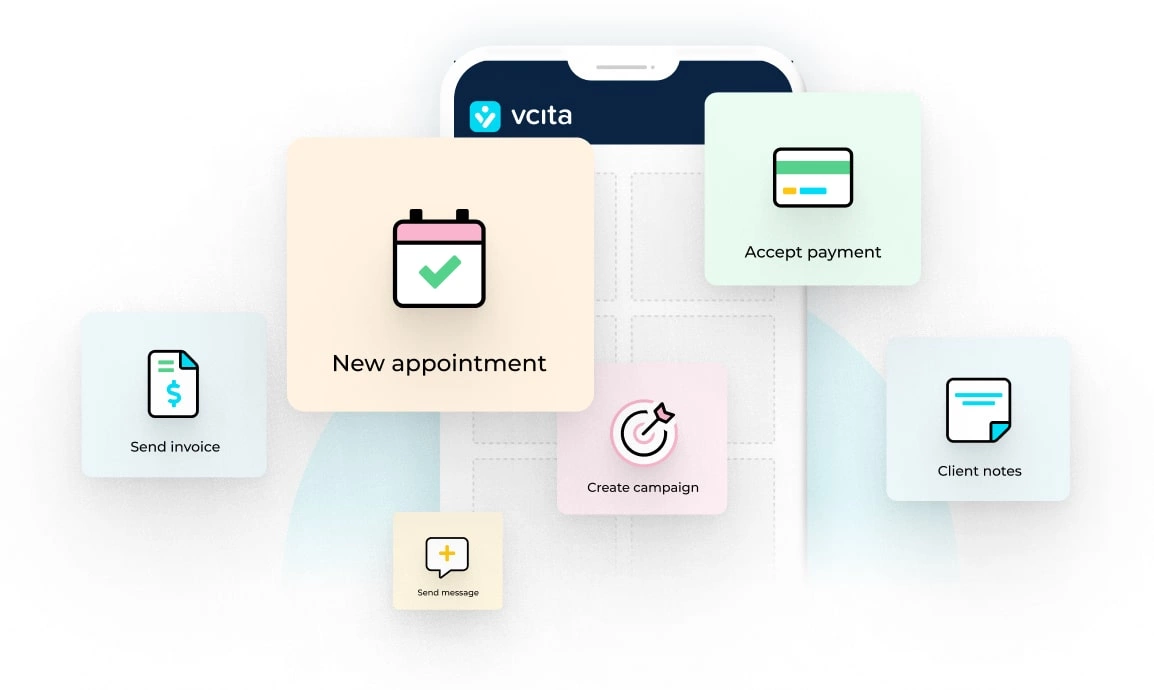If your business is fortunate enough to be busy these days, subcontractors are a brilliant way to cover more clients without spreading yourself too thin.
Ideally, the relationship is a win-win-win.
You supply your subcontractors with work, they get the job done and your clients stay satisfied.
But we’ll bite: managing subcontractors can be complicated.
Why?
Because subcontractors represent your business without the strings of being employed.
That means their no-shows, late work and shoddy jobs become your responsibility. Meanwhile, there’s the looming “what-if” of subcontractors going behind your back to take your clients.
Listen: your relationship with your subcontractors should be positive and proactive. That’s why we’ve broken down the steps to effectively manage folks who work on behalf of your business.
1. Start by building a foundation of trust
Not to sound cheesy, but your relationship with your contractors is, well, a relationship.
And any business relationship needs to be founded on trust. After all, how can you expect someone to work on behalf of your business if you can’t trust them?
Perhaps the best way to find trustworthy subcontractors is through referrals and your personal network. When your workers have a solid reputation with folks you know, you can assign out jobs with some much-needed peace of mind.
But let’s say you’re hiring subcontractors from outside your network. The initial application and interview process can help you understand if someone is a professional with an actual track record or not.
For example, do they have the proper insurance and certifications for your industry? Can they provide references and prove their years of experience? If someone can’t answer these sorts of questions with confidence, that’s a red flag.
This pre-qualification form is a shining example of how to separate a serious subcontractor from someone who’s likely to flake out on you.
When in doubt, ask questions and trust your gut. After all, you can’t start assigning out jobs if you’re constantly second-guessing yourself.
2. Be upfront about your expectations
So much of building trust with subcontractors is about being prepared and organized on your part. You’re more likely to have a successful partnership when both parties are crystal clear about what expectations are surrounding the work involved.
And there are tons of variables to consider when managing subcontractors. This includes the scope of their work, responsibilities and (of course), their rate.
Having your expectations built into a subcontractor agreement (see below) not only covers you from a legal perspective but also ensures that there are fewer “surprises” that could sour your relationship.
Pro-tip: you can keep track of your subcontractor documents with the help of tools like vcita, making it so much easier and faster to onboard your crew!
Also, consider expectations for your subcontractors that go beyond legalese or contract language.
For example, how do they prefer to communicate? Are you looking to work together on an as-needed basis or long-term? The sooner you answer these questions, the better.
3. Build delays into your subcontractors’ schedules
Arguably the most common complication related to working with subcontractors are delays.
Perhaps a job with another client took way longer than anticipated. Or maybe a member of their team had to call in sick or a crucial piece of equipment broke down.
Trust us: it happens. The key is that you plan for these slowdowns ahead of time.
Rather than have to shuffle your schedule out of nowhere, always try to give your contractors a bit of leeway in terms of assigning jobs (think: don’t assign out a series of next-day jobs to the same crew). It likewise helps to have a birds-eye view of your subcontractors’ schedules to understand whether or not they can realistically finish a job on time.
This is a great example of how coordinating schedules in vcita can be a game-changer. Instead of playing phone-tag or trying to figure out who’s available when, our platform does the legwork of reducing scheduling conflicts and ensuring you get everything on your calendar done in a timely manner.
Building delays into your scheduling isn’t just to benefit your contractors: it’s also crucial to managing your clients’ expectations. Again, you don’t want to promise speedy service to someone when your subcontractors are booked solid.
4. Keep your subcontractors happy and motivated
This might seem like a no-brainer, but it can’t be stressed enough: your subcontractors will be more likely to work with you if you treat them well.
But what does that actually mean? Below are some must-dos:
Pay them on time!
Just like you expect to get paid on time, the same rings true for your subcontractors.
But the more people you have working under you, the more likely there is to be lag time between your invoices and the rest of your to-do list.
This is yet another reason why having your contractors set up in a system like vcita is helpful, allowing you to make and request online payments ASAP rather than play the waiting game.
Assign them regular work
Although you may not be 100% in control of what’s available to outsource, consider that your subcontractors are more likely to be loyal if you’re assigning work consistently.
Doing so is pretty simple if you’re only working with one or two subcontractors. However, assigning your jobs fairly can feel like a bit of a balancing act once you’ve assembled a larger team.
With a team management app like vcita, you can clearly see who’s available and likewise who’s the best fit for any given job. Rather than assign work at random, you can sync your clients’ schedule with your subcontractors seamlessly.
Be a positive client yourself
“Be nice” may not seem like groundbreaking advice.
However, working with subcontractors can cause some business owners to get big-headed.
Just because someone’s a subcontractor doesn’t mean they’re literally below you! They’re business owners themselves and should be treated with the same sort of respect you’d expect.
So don’t be shy about saying “thanks” and sharing positive feedback from satisfied clients with them. You can likewise go a step further by offering up testimonials and referrals as reward for a job-well-done.
5. Stop Worrying About “Stolen” Business
Okay, time to talk about the elephant in the room.
You might be paranoid about subcontractors potentially taking clients out from under you.
On one hand, this fear isn’t completely unfounded. It does happen, but probably not as often as you’d think.
Overcoming the paranoia of losing your business to subcontractors means sticking to many of the steps above.
For starters, remember what we said earlier about trust (#1)?
If you have a good working relationship with a subcontractor, you shouldn’t assume the worst of them.
In fact, most subcontractors prefer the arrangement of not having to chase after leads or actively prospect. You’re doing the legwork for them. Trying to undercut you likely isn’t worth the risk.
This is especially true if you pay them fairly (#2), assign them consistent work and treat them well (#4). Why would they ruin the good thing they have going for them? When you become the ideal client for your subcontractors, they have no reason to leave the arrangement.
There are additional steps you can take to worry less about “stolen” business, by the way.
For example, you can build language into your contractor agreements which explicitly prohibits contacting clients directly. Although you likely won’t take legal recourse if it does happen (unless we’re talking about a massive client or contract), this might be the easiest way to make it clear that you mean business.
Also, consider that providing a stellar client experience goes hand in hand with loyalty. Offering speedy response times, service with a smile and a personalized experience can help ensure that your clients don’t go elsewhere for what you have to offer.
The takeaway? Don’t sweat “what-if” situations with your subcontractors. Instead, focus on doing great work on behalf of your clients first and foremost.
6. Communicate with your subcontractors consistently
Both avoiding headaches and building better relationships with your business partners mean staying in touch.
Check-in calls. Emails and texts. The list goes on and on.
By consolidating all of your communication and scheduling with your subcontractors, you make it simple to get in touch with them at a moment’s notice about their next job.
And yet again, this is exactly where vcita comes in handy. With all of your client and subcontractor information in one place, you can spend less time scrambling and more time getting work done.
Our platform lets you not only keep notes on your business partners but also keep all of their crucial contact information organized.
And when you’re juggling multiple subcontractors and clients, that organization is key.
Do you have a process for managing your subcontractors?
For certain industries, subcontractors are absolutely crucial to doing business.
The sooner you learn how to work with subcontractors, the quicker you can grow your company.
With the tips above and a platform like vcita, you can put yourself on the path to better business partnerships no matter who you’re working with.

























